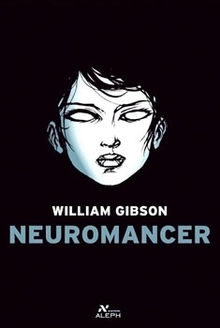- Molly Millions
-
Molly Millions (also known as Sally Shears) is a recurring character in stories and novels written by William Gibson, particularly his Sprawl trilogy. She first appeared in Johnny Mnemonic, to which she makes an oblique reference in Neuromancer (where she is mostly referred to as "Molly" with no last name given). Her most recent literary appearance was under the name "Sally Shears" in the book Mona Lisa Overdrive.
Contents
Character history
In all three stories, Molly is a physically tough (but not instantly imposing) bodyguard/mercenary cyborg. She is referred to as a "razor girl" throughout his stories and also as "Steppin' Razor" by the residents of Zion, a Rastafarian space station.
A useful contact for dealing with gangs and black market elements, she tends to show little remorse for the opponents she ruthlessly dispatches in the course of her objectives. In fact she shows few deep emotions towards anyone outside of hatred, suspicion or amused contempt. Nevertheless, Molly is always regarded throughout the book as a loyal, morally strong character, opposed to the progressing decay of human relations in the world Gibson depicts.
An exception to her cold, somewhat cynic approach to life was Johnny (of Johnny Mnemonic), for whom she still mourned at the time of Neuromancer. This is part of the personal history she relates to its protagonist, Case, in addition to the revelation that she worked as a "meat puppet" (a prostitute) in a "puppet parlor" (a brothel where people loan out their bodies while maintained in a blanked-out state) to pay for her considerable cybernetic enhancements.
Another pseudonym, used when she rents a hotel room in Neuromancer, is "Rose Kolodny", the name by which the Turing Police refer to her. The Turing Police may have simply gotten the name from the hotel's registry, but it is sometimes speculated to be her original name. The later trilogy books speculate that she is "SINless", having been an unrecorded birth and never having been issued a "Single Identity Number". This would give her the advantage of being more difficult to track in the cyberspace environment. Critic Larry McCaffery asserts that "Molly" is a "moll" .[1]
William Gibson has stated that he derived inspiration for the character from the image of Chrissie Hynde on the cover of the first Pretenders album.[2][3]
Augmentations
A lean, athletic, attractive woman who appears at first glance to be wearing mirrored sunglasses, Molly has in fact had her eye sockets sealed with vision-enhancing mirrored lenses that were surgically attached to her face by the skilled black-market surgeons of Chiba City. To accommodate the inset lenses her tear ducts have been re-routed to her mouth; consequentially, on the very rare occasions Molly cries, she spits out or swallows the tears instead. She never lets others touch the lenses as it would leave messy fingerprints requiring extra cleaning.
Her sensory input, metabolism and reflexes are also artificially heightened by means of electronic implants and exotic forms of advanced surgeries and other medical procedures. Molly also sports razor-sharp retractable claws underneath her fingernails: ten double-edged blades four centimeters in length.[4]
Portrayal in other media
The 1994 film version of Johnny Mnemonic replaced Molly with a character named Jane who did not have modifications to her eyes or to her fingers. Jane did share the modified nervous system but used a single razor attached to the tip of a telescoping "car antenna" as a weapon. It is possible that this was due to the "Molly" character being attached to the rights for any possible future Neuromancer film adaptation.
In the 2003 BBC Radio adaptation of Neuromancer, Molly was played by the English actress Nicola Walker. Actress Sasha Grey took on the role in Case, a six-hour dramatic contemporary adaptation of the novel staged in New York City in November 2009.[5]
References in pop culture
Molly is the subject of a song called "Mirrorshades" by the group Information Society.[6] Trinity from The Matrix franchise is similar to Molly in character and appearance.
Notes
- ^ McCaffery, Larry (1991). Storming the Reality Studio. Durham: Duke University Press. ISBN 9780822311683.
- ^ Twitter comment: "Key iconic for Molly was C. Hynde on first Pretenders album cover (...)"
- ^ Twitter comment: "(...) Not so much CH per se, but this particular image."
- ^ Gibson, William (2003). Burning Chrome (Johnny Mnemonic). New York City: Arbor House. p. 8. ISBN 0030539828. Chrome.
- ^ "Six Hours Of William Gibson's Neuromancer... Starring Sasha Grey As Molly". io9. http://io9.com/5403184/six-hours-of-william-gibsons-neuromancer-starring-sasha-grey-as-molly.
- ^ Comments: Mirrorshades
References
- William Gibson, Burning Chrome ("Johnny Mnemonic"), 1986, ISBN 0-06-053982-8
- William Gibson, Neuromancer, 1984, ISBN 0-441-56956-0
- William Gibson, Mona Lisa Overdrive, 1988, ISBN 0-553-28174-7
External links
- Razor girls: Genre and Gender in Cyberpunk Fiction
- William Gibson aleph Fan site
- Voidspace Online excerpts from Neuromancer and Mona Lisa Overdrive
- MOLLY'S MIRRORSHADES; ZEISS-IKON EYES "I could never dream up a sufficiently convincing way to imagine them being attached."
William Gibson List of works · List of awards and nominationsNovels Bigend booksOther
Short stories "Fragments of a Hologram Rose" · "Johnny Mnemonic" · "The Gernsback Continuum" · "Hinterlands" · "New Rose Hotel" · "The Belonging Kind" · "Burning Chrome" · "Red Star, Winter Orbit" · "The Winter Market" · "Dogfight" · "Skinner's Room" · Burning Chrome collectionNonfiction Characters Tessier-Ashpool · Molly Millions · Bobby Newmark · Rei Toei · Konrad · Cayce Pollard · Hubertus BigendStory elements Derivative works Categories:- Fictional cyborgs
- Sprawl trilogy
- William Gibson characters
- Fictional characters introduced in 1981
- Characters in novels of the 20th century
Wikimedia Foundation. 2010.

